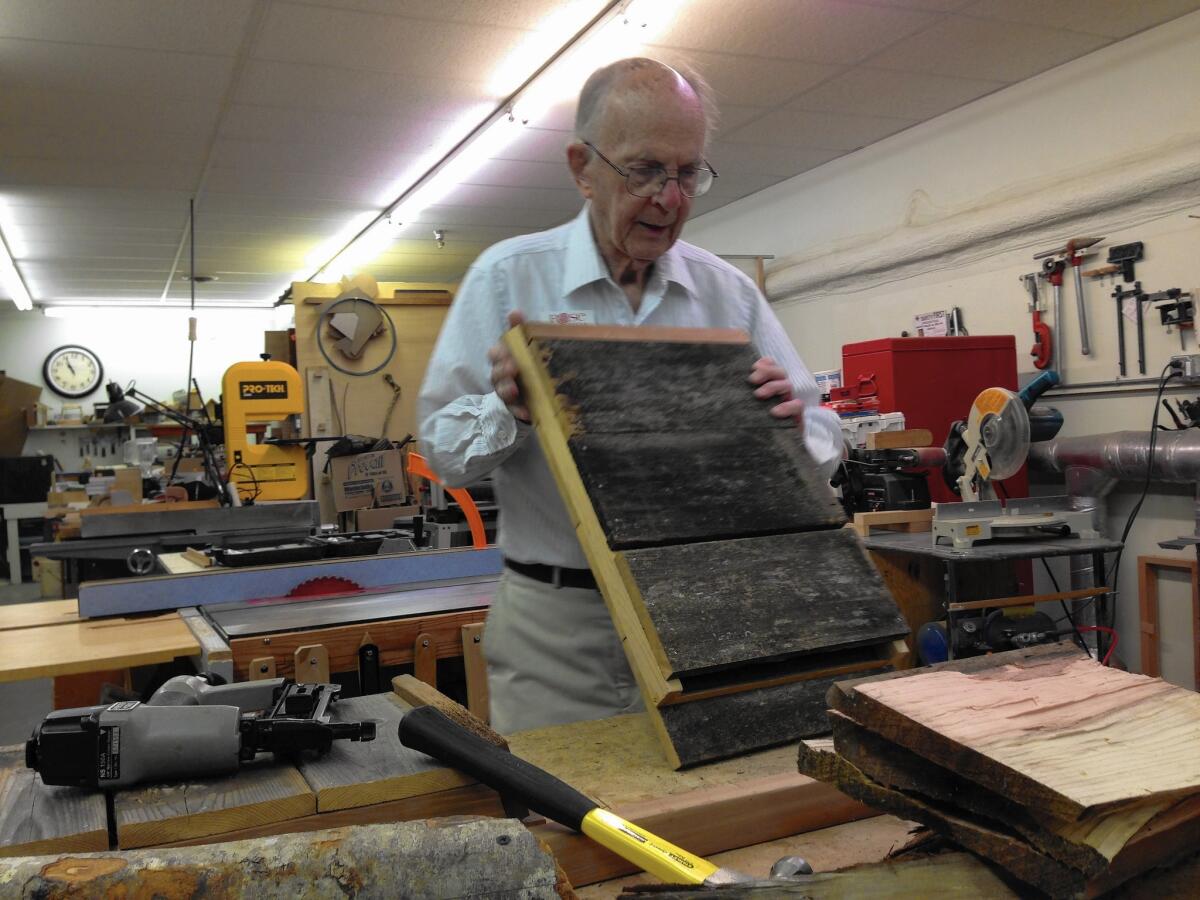A Portland community’s batty idea: collect guano for its gardens

- Share via
reporting from PORTLAND, Ore. — It was a dark and stormy night that brought the bats to Rose Villa.
No, really.
The squall hit before Memorial Day weekend in 2013, battering the vast array of heirloom tomato plants into a sickly approximation of their former bright-green glory. So Kathleen Paveletz unleashed her secret weapon. Not long after, the plants began to bear fruit.
“Someone asked me what my secret was, ‘Miracle-Gro?’” Paveletz recounted. “Nope. Bat guano.”
NEWSLETTER: Get the day’s top headlines from Times Editor Davan Maharaj >>
Yes, what might be called, in polite company, fecal matter from our flying furry friends.
The garden in question grows on the sprawling grounds of this very Portland retirement community founded in 1960 along the banks of the Willamette River. It has a dog park, free Wi-Fi, a yoga studio and 277 varieties of roses. Electric charging stations for alternative-fuel vehicles are in the works.
Residents cultivate their own fruit, vegetables and flowers on two acres of community plots and sell the summer excess at an on-site farmers market. A kitchen garden produces herbs and squash, fennel and lettuces, tomatoes and cucumbers — about 2,000 pounds this summer — for use in Rose Villa’s restaurant, appropriately called Harvest Grill.
Paveletz is Rose Villa’s baker — and a master gardener. Two years ago, she gathered the community’s first dose of bat guano from her parents’ farm in nearby Newberg. Diluted in water and turned into a tea, bat guano is nitrogen-rich, organic and very effective.
It also could become a regular part of the growing experience here. Rose Villa wants to attract its own colony of Chiroptera, also known as bats. Then it could harvest its own bat guano. And use it to fertilize its own gardens. And grow more fruit and vegetables for its own residents.
And pumpkins. Really, really big pumpkins. Pumpkins the size of Smart Cars. At least, that is the hope.
As America’s 65-plus population soars, specialized retirement facilities are cropping up throughout the country. Some communities cater to mail carriers who have laid down their pouches, others to former actors or equestrians.
Some have bass lakes and wine caves. Others are affiliated with universities, populated by former academics whose published works fill the library shelves.
But in the universe of late-life lodging, Rose Villa may be as singular as the city it calls home.
And that is saying something. Portland is the U.S. capital of strip clubs, craft brews, bicycle riders and all things vegan, the site of what is believed to be the largest World Naked Bike Ride in, well, the naked world, as well as America’s only vegan strip club.
“Bat guano and organic food? Love it,” says Andrew Carle, founding director of George Mason University’s program in senior housing administration, who calls Rose Villa’s focus on sustainability “extremely rare.”
“There are retirement communities that I’ve heard of that are focused on healthy eating, but it depends on your market,” Carle said. “It’s interesting to people in Oregon, sure. To people living in Brooklyn? Not so much.... When I turn 80, I’m going to put gravy on everything.”
Step 1 in courting a colony of bats is to create a place where the world’s only flying mammals would want to live. That’s where Bob Bennett and Walter Garvin come in.
Earlier this year, the retired physics professor and the retired engineer got together in Rose Villa’s vast wood shop, where they built about half a dozen bat houses after researching plans online.
In keeping with their Depression-era childhoods and the Pacific Northwest’s eco-friendly ethos, they used all recycled wood — salvaged from a nearby mill, from a dawn redwood felled during Rose Villa’s ongoing renovation, from the garages that new residents empty when they downsize their lives and move here.
Bennett, 88, wears a white dress shirt with a pen tucked into the breast pocket. His khakis are secured by a brown belt cinched tight, its wear marks evidence of younger, stouter days. He is careful and deliberate.
One bright spring morning, Bennett fired up the wood shop’s cabinet saw, its radial arm saw, its noisy pneumatic nailer. He measured boards and then measured again, cut and constructed.
Bat houses are surprisingly small, but then, as Paveletz points out, “The bats are little. When people think of bats, they think of these huge black things that’ll pick you up. But in the Northwest, they’re tiny.”
The rustic little structures Bennett and Garvin built are about the size of a legal pad and less than 2 inches deep. Bats enter from the bottom through an opening that’s about three-quarters of an inch wide.
“They need to have a place to land and crawl in,” Bennett explained as he wielded the air hammer. “We make the bottom narrow so predators can’t get in. I learned this from reading. I’m not a bat. They like the top air-tight. They crowd to the top.
“I don’t know how important it is to the bats, but in the video I watched, they caulked them so that light wouldn’t get in,” Bennett continued. “But I don’t think the bats will decide on aesthetics.”
It is unclear, however, just how the fickle creatures make up their minds.
The houses went up in May. Summer came and went. Autumn arrived, and now Halloween. So far, the bats have not appeared.
Paveletz, however, is patient.
“It takes several years to get them to come,” she said. “I’m not sure if we’ve had visitors. I would have noticed if there was guano on the bottom of the houses. I didn’t see any.”
Twitter: @marialaganga
ALSO:
Russian airliner carrying 224 crashes after takeoff in Sinai
California doctor convicted of murder charges in overdose of patients
Burbank man, 20, ejected from car lands on 5 Freeway sign in Glendale
More to Read
Sign up for Essential California
The most important California stories and recommendations in your inbox every morning.
You may occasionally receive promotional content from the Los Angeles Times.











